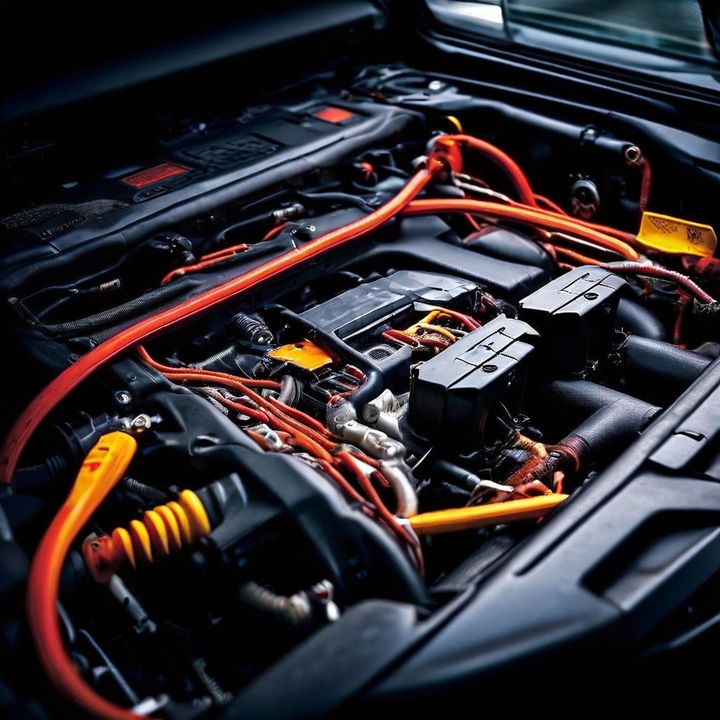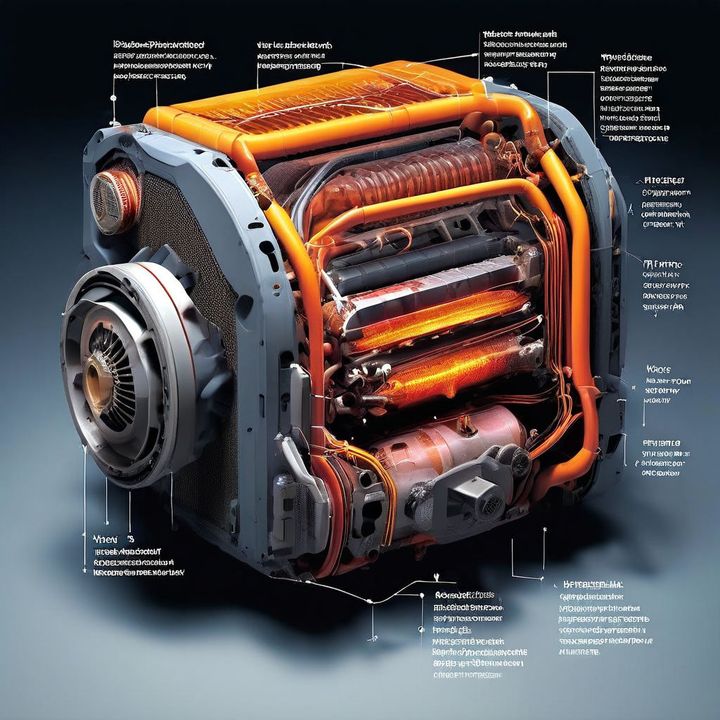


The car's heating system is a crucial component that ensures a comfortable and safe driving experience, especially during the cold winter months. A properly functioning heater not only keeps the cabin warm but also helps in defrosting the windshield and windows, providing clear visibility for the driver. However, a common issue that many car owners face is when the heater blows hot air only when the car is moving but blows cold air when idling.

The "heat only works when driving" problem can stem from various underlying issues within the cooling system. Here are the most common culprits:
| Potential Cause | Description |
|---|---|
| Low Coolant Level | If there's not enough coolant (antifreeze) in the system, it may not circulate properly until the engine warms up while driving, preventing heat transfer to the cabin. |
| Air Trapped in the Cooling System (Air Lock) | Air pockets can form in the cooling system, blocking the coolant from circulating and heating the heater core until the engine gets hot enough to push out the air bubbles. |
| Faulty Thermostat | A stuck-open thermostat allows constant coolant flow, preventing it from getting hot enough to heat the cabin until higher engine temperatures are reached while driving. |
| Clogged or Restricted Heater Core | Debris or mineral buildup in the heater core can block coolant flow, only allowing heat transfer once higher pressures are generated from driving. |
Understanding the root cause is crucial for addressing the issue effectively.
Before diving into repairs, it's essential to diagnose the root cause of the issue. Here are some troubleshooting steps I recommend:
Check the coolant level in the overflow tank when the engine is cold. Top up if low.
Feel the radiator hoses - they should be firm and hot when the engine is warmed up. Soft, cool hoses indicate low coolant flow.
Use a diagnostic scan tool to check the engine temperature readings. If it's not reaching normal operating temperatures, the thermostat may be faulty.
Inspect for any coolant leaks under the vehicle after it has been parked.
Turn on the heater at maximum with the engine idling. Feel the heater hoses - if they don't get hot, there could be a blockage or air lock.
Based on the troubleshooting results, here are the common repair procedures:
Locate and repair any coolant leaks, which could be caused by a faulty water pump, radiator, hoses, or gaskets.
Refill the cooling system with the correct coolant mix and bleed out any air pockets by running the engine with the radiator cap off until the thermostat opens and the coolant level stabilizes.
Bleed the cooling system by running the engine with the radiator cap off until the thermostat opens and the coolant level stabilizes. This process helps purge any trapped air pockets.
Replace the thermostat following the manufacturer's procedure, which typically involves draining a portion of the coolant, removing the old thermostat, and installing a new one.
Flush the heater core using a backflush tool or specialized machine to dislodge any debris or mineral buildup. This process can be labor-intensive and may require removing the heater core from the vehicle.
If the heater core is severely clogged or damaged, it may need to be replaced, which is a more involved and costly repair.
To avoid future issues with your vehicle's heating system, I recommend taking the following preventive measures:
Check the coolant level regularly and top up as needed with the correct coolant mix. This simple step can prevent many cooling system problems.
Have the cooling system inspected annually and flush/replace the coolant as per the manufacturer's maintenance schedule. This helps remove any buildup or contaminants that could clog the system.
Avoid running the engine too cold by allowing it to warm up before driving. This helps the coolant circulate properly and prevents potential issues.
Use the fresh air mode when first starting the vehicle to help remove any condensation buildup in the heating and ventilation system.
The cost of repairs can vary depending on the specific issue and the make and model of your vehicle. Here are some general cost estimates:
| Repair | Cost Range |
|---|---|
| Replacing a Thermostat | $140 - $300 |
| Flushing a Heater Core | $60 - $360 |
| Replacing a Heater Core | $500 - $900 |
| Refilling Coolant | $10 - $50 |
| Repairing Coolant Leaks | Varies greatly depending on the location and extent of the leak |
It's important to note that these are rough estimates, and the actual cost may differ based on your specific vehicle, labor rates in your area, and the complexity of the repair.

Neglecting cooling system issues can lead to more severe and costly problems, such as engine overheating, head gasket failure, or even complete engine failure.
If you're not comfortable performing the repairs yourself, it's always recommended to seek the assistance of a professional mechanic to ensure the job is done correctly and safely.
Some vehicles may have additional components or unique cooling system designs that require specialized knowledge and tools for proper diagnosis and repair.
The "heat only works when driving" issue can be frustrating, but it's a common problem with several potential causes. By understanding the underlying reasons, performing proper troubleshooting, and following the recommended repair procedures, you can restore your vehicle's heating system to optimal performance. Additionally, adhering to preventive maintenance measures can help avoid future issues and ensure a comfortable driving experience, regardless of the weather conditions.
If you're experiencing this problem or have any concerns about your vehicle's heating system, don't hesitate to consult a professional mechanic. With their expertise and the right diagnosis, you can get your car's heating system back in top shape, keeping you and your passengers warm and cozy on every journey.
The main sign is if the heat only works when driving and not when idling. Other signs include coolant leaks, cold air blowing from vents, and the temperature gauge not reaching normal operating levels.
Yes, low coolant levels can prevent proper circulation until the engine warms up from driving, allowing heat transfer to the cabin.
An air lock is when air pockets form in the cooling system, blocking coolant flow and preventing heat transfer until higher engine temperatures push out the air bubbles.
A faulty thermostat that stays open will allow constant coolant flow, preventing it from getting hot enough to heat the cabin until higher temperatures are reached while driving.
Debris or mineral buildup in the heater core can restrict coolant flow, only allowing heat transfer once higher pressures are generated from driving.
Run the engine with the radiator cap off until the thermostat opens and the coolant level stabilizes, purging any trapped air pockets.
Follow the manufacturer's maintenance schedule, but generally flushing and replacing the coolant every 2-3 years or 30,000-50,000 miles is recommended.
Yes, replacing the thermostat is a relatively straightforward job that can be done by following the manufacturer's procedure and proper safety precautions.
Neglecting cooling system problems can lead to severe and costly issues like engine overheating, head gasket failure, or even complete engine failure.
If you're not comfortable performing cooling system repairs yourself, or if the issue seems complex, it's best to seek assistance from a professional mechanic.

Sarah isn't your average gearhead. With a double major in Mechanical Engineering and Automotive Technology, she dived straight into the world of car repair. After 15 years of turning wrenches at dealerships and independent shops, Sarah joined MICDOT to share her expertise and passion for making cars run like new. Her in-depth knowledge and knack for explaining complex issues in simple terms make her a valuable asset to our team.













